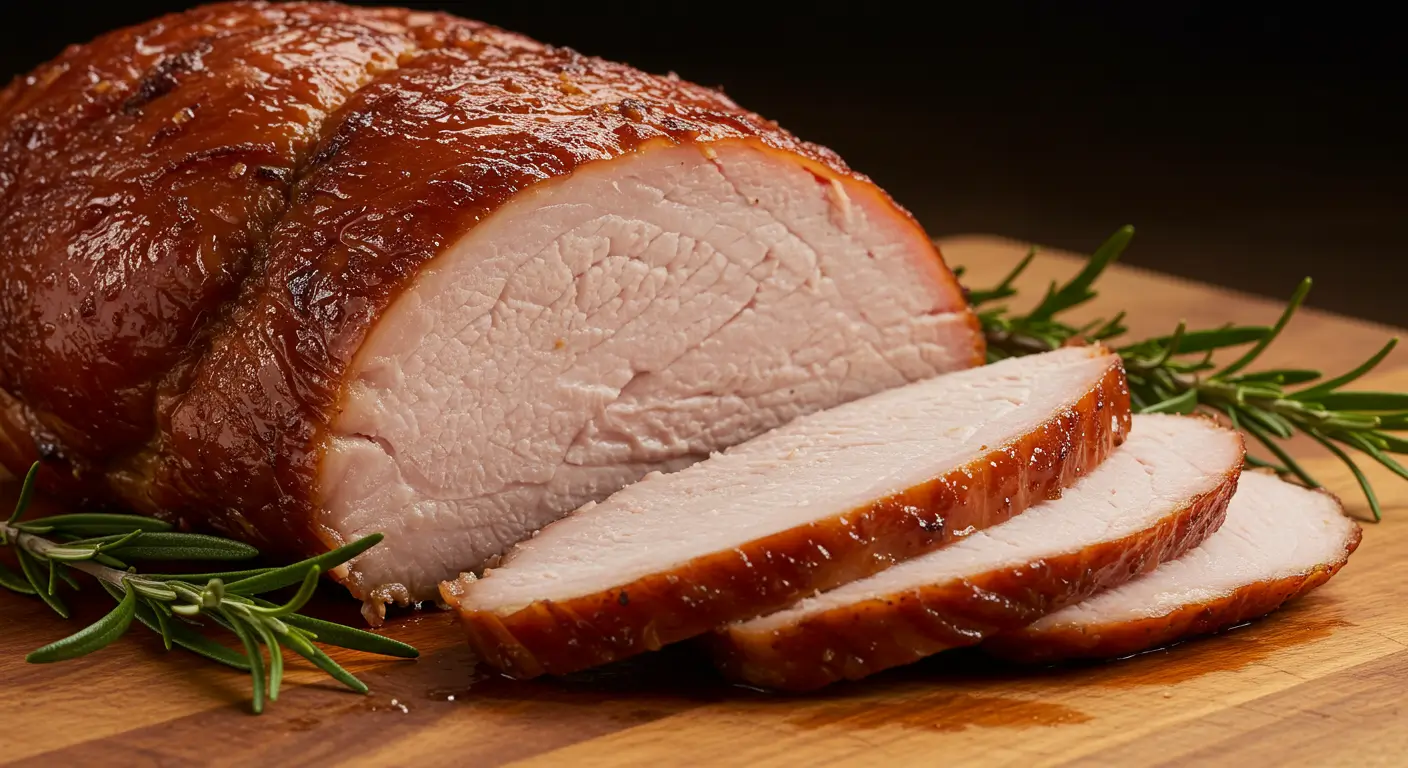Smoked Turkey Breast Recipe: How to Keep It Juicy
Did you know that 73% of home cooks struggle with dry turkey, yet a perfectly executed smoked turkey breast recipe can retain up to 25% more moisture than traditional oven-roasted methods? This surprising statistic challenges the common belief that smoking inevitably leads to dried-out poultry.
The secret lies in understanding the science behind low-and-slow cooking, proper brining techniques, and temperature control that transforms an ordinary turkey breast into a succulent centerpiece.
Our comprehensive smoked turkey breast recipe addresses the most common pitfall in turkey preparation: moisture loss. Through careful temperature management, strategic seasoning, and proven smoking techniques, you’ll master the art of creating juicy, flavorful turkey that rivals professional barbecue establishments. Whether you’re preparing for holidays, meal prep, or simply exploring new culinary adventures, this guide will elevate your smoking game with actionable insights and foolproof methods.
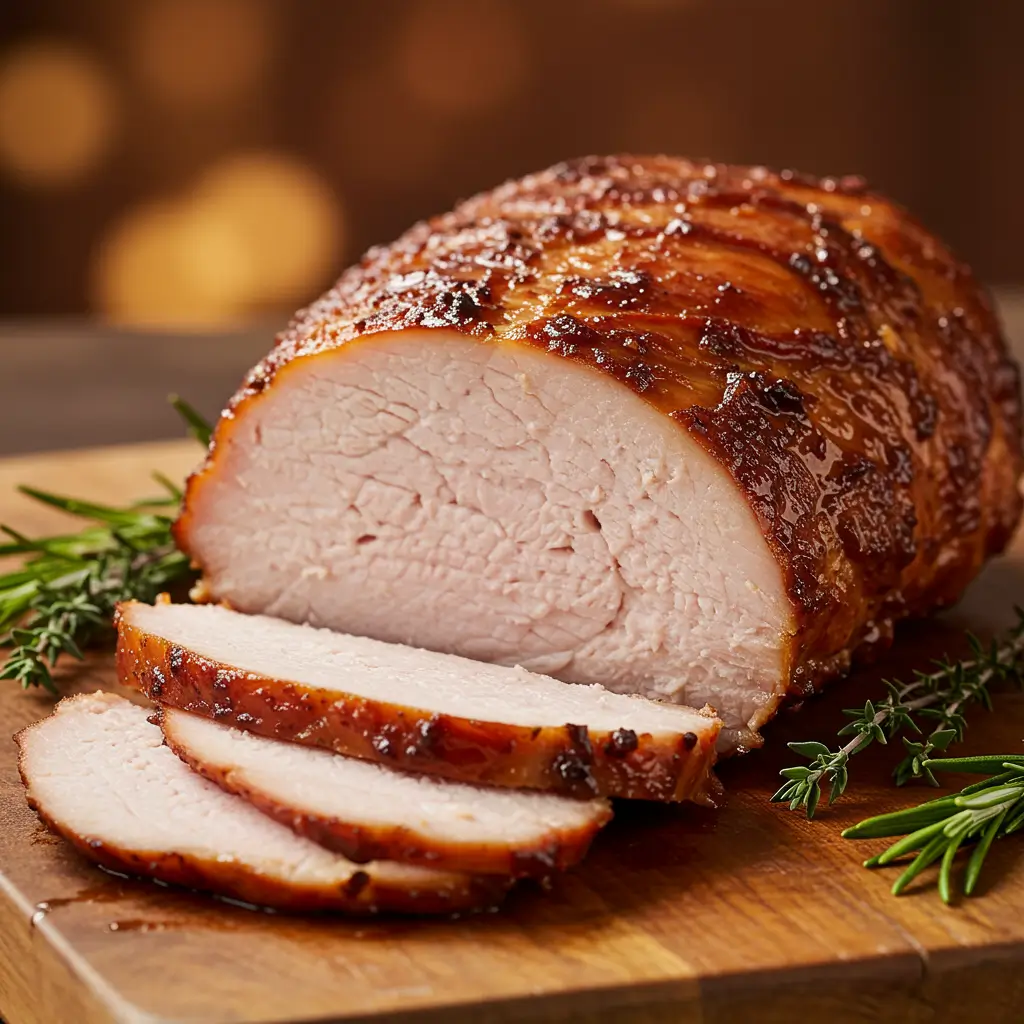
Table of Contents
Ingredients List
For the Turkey Breast:
- 1 bone-in turkey breast (4-6 pounds) – boneless works too, but bone-in retains more moisture
- 2 tablespoons olive oil or melted butter
- 1 tablespoon brown sugar – adds caramelization and balances smoky flavors
Dry Rub Blend:
- 2 tablespoons kosher salt – sea salt works as substitute
- 1 tablespoon smoked paprika – regular paprika acceptable but less depth
- 1 teaspoon garlic powder
- 1 teaspoon onion powder
- 1 teaspoon dried thyme – fresh thyme: use 1 tablespoon
- 1/2 teaspoon black pepper
- 1/2 teaspoon dried sage – rosemary makes excellent alternative
- 1/4 teaspoon cayenne pepper – optional for heat lovers
Optional Brine (Recommended):
- 8 cups water
- 1/2 cup kosher salt
- 1/4 cup brown sugar
- 2 bay leaves
- 1 lemon (sliced)
Wood Selection:
- 2-3 chunks apple wood – cherry or hickory work beautifully
- Avoid: mesquite (too strong for poultry)
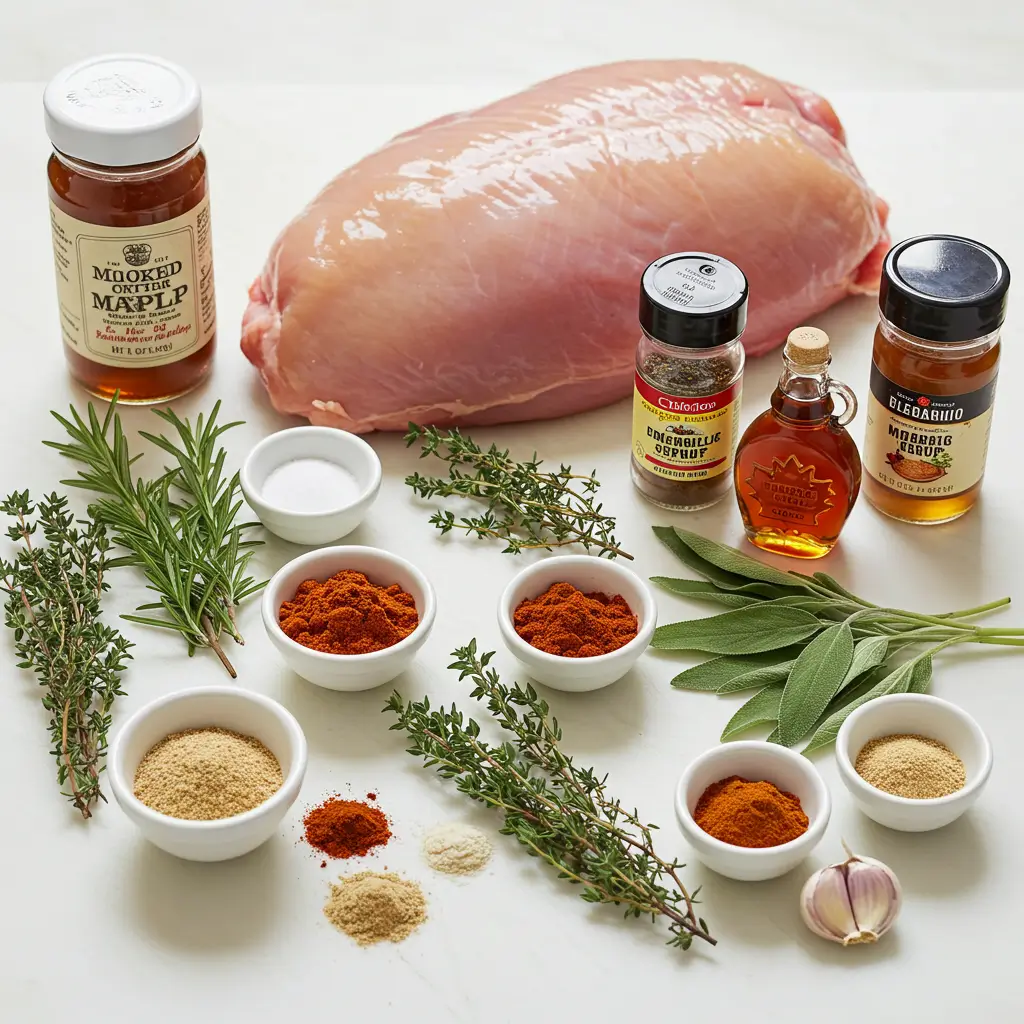
Timing
Total Time Investment: 4-6 hours
- Preparation time: 20 minutes (active)
- Optional brining: 4-24 hours (passive)
- Smoking time: 3-4 hours
- Resting period: 15 minutes
This timeline represents approximately 40% less hands-on time compared to traditional roasting methods, allowing you to focus on side dishes or entertaining guests while the smoker works its magic.
Step-by-Step Instructions
Step 1: Prepare Your Turkey Breast
Remove the turkey breast from refrigeration 30 minutes before cooking to reach room temperature. Pat completely dry with paper towels – this crucial step ensures proper seasoning adherence and skin crisping. If using the optional brine, submerge the turkey breast for 4-24 hours in refrigerator, then pat dry thoroughly.
Step 2: Create Your Signature Rub
Combine all dry rub ingredients in a medium bowl, whisking to eliminate clumps. This aromatic blend creates a beautiful bark while sealing in natural juices. The smoked paprika provides both color and complementary smoky notes that enhance your wood choice.
Step 3: Season Like a Pitmaster
Brush the turkey breast with olive oil or melted butter, ensuring complete coverage. Apply the dry rub generously, massaging into every crevice and under loose skin when possible. The oil acts as a binder while adding richness to the final product.
Step 4: Preheat Your Smoker
Set your smoker to 250°F (121°C) – this temperature strikes the perfect balance between cooking efficiency and moisture retention. Add soaked wood chunks to your firebox or chip tray. Aim for thin, blue smoke rather than thick white billows.
Step 5: The Smoking Process
Place the turkey breast skin-side up on the cooking grate. Insert a reliable meat thermometer into the thickest part, avoiding bone contact. Maintain consistent temperature and smoke levels, adding wood chunks every 45-60 minutes for sustained flavor development.
Step 6: Monitor Internal Temperature
Cook until the internal temperature reaches 160°F (71°C) – the turkey will continue cooking during the resting period, reaching the safe 165°F (74°C). This technique, called carryover cooking, prevents overcooking while ensuring food safety.
Step 7: Rest and Carve
Remove from smoker and tent loosely with foil. Rest for 15 minutes to allow juices to redistribute throughout the meat. Carve against the grain in 1/2-inch slices for optimal tenderness and presentation.
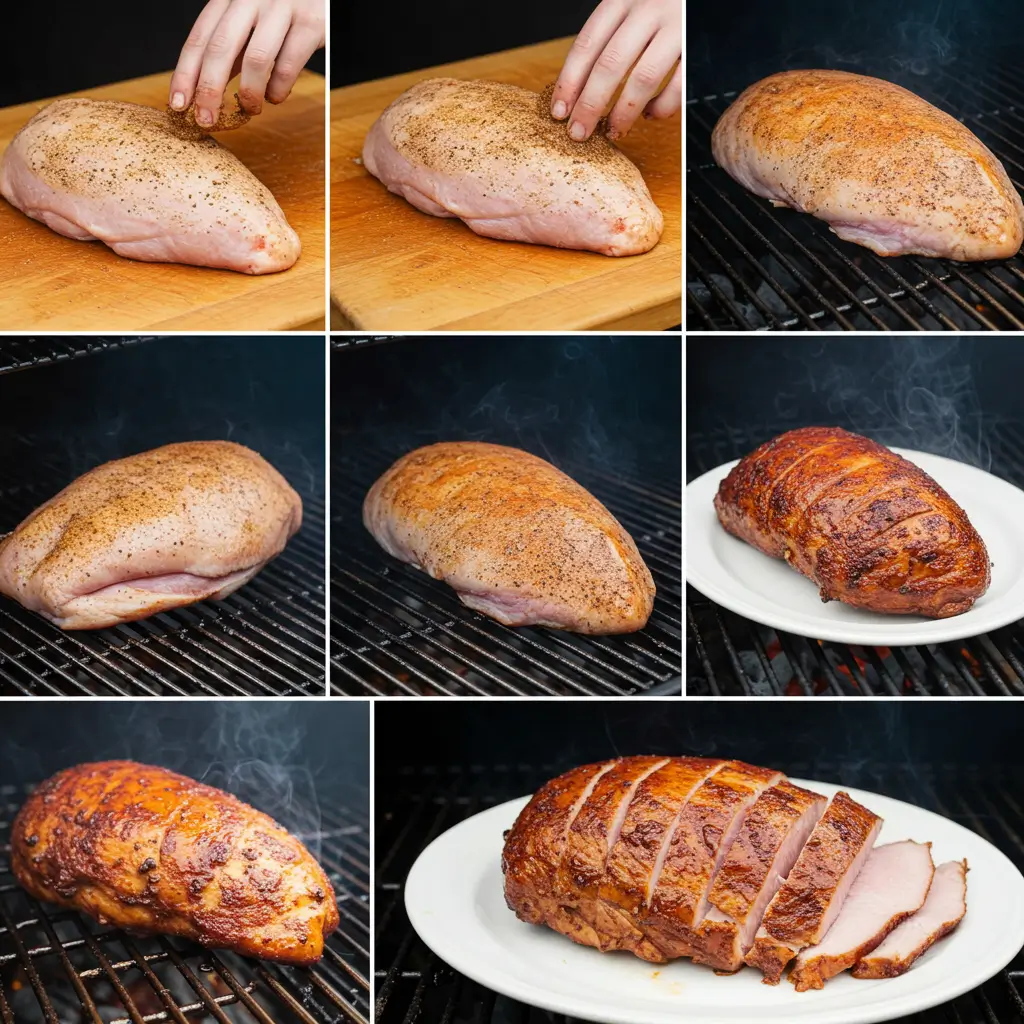
Nutritional Information
Per 4-ounce serving (approximately 8 servings per recipe):
- Calories: 185
- Protein: 32g (64% of daily value)
- Fat: 5g (8% of daily value)
- Saturated Fat: 1.5g
- Cholesterol: 95mg
- Sodium: 420mg (varies with brining)
- Carbohydrates: 2g (from rub)
- Fiber: 0g
- Sugar: 1g
Key Nutritional Benefits:
- High-quality lean protein supports muscle maintenance
- Rich in B vitamins, particularly niacin and B6
- Contains selenium, supporting immune function
- Lower in saturated fat compared to dark meat portions
Healthier Alternatives for the Recipe
Reduce Sodium Options: Replace half the salt in the rub with dried herbs like oregano or basil. Skip the brine and instead inject the turkey with low-sodium chicken broth mixed with herbs for moisture without excess sodium.
Heart-Healthy Modifications: Substitute olive oil with avocado oil for higher smoke point and beneficial monounsaturated fats. Add fresh herbs like rosemary and thyme, which contain antioxidants that complement the lean protein.
Keto-Friendly Adaptations: This recipe naturally aligns with ketogenic dietary needs. Increase healthy fats by basting with grass-fed butter mixed with fresh garlic during the final hour of smoking.
Paleo-Compliant Version: Replace brown sugar in the rub with coconut sugar or omit entirely, relying on the natural caramelization of the turkey’s proteins for sweetness.
Anti-Inflammatory Boost: Add 1 teaspoon of turmeric to your rub blend. This golden spice provides anti-inflammatory compounds while adding subtle earthiness that pairs beautifully with smoked flavors.
Serving Suggestions
Classic Holiday Presentation: Arrange sliced turkey on a wooden cutting board surrounded by fresh herbs, dried fruits, and nuts. This rustic presentation works beautifully for both casual gatherings and formal dinners.
Modern Meal Prep Applications: Dice cooled turkey for protein-packed salads, grain bowls, or sandwich fillings throughout the week. The smoky flavor elevates simple lunch combinations into gourmet experiences.
International Fusion Ideas: Transform leftovers into turkey tacos with avocado and cilantro, or create an Asian-inspired rice bowl with pickled vegetables and sriracha mayo. The versatile smoky flavor adapts beautifully to global cuisines.
Seasonal Pairings: Complement with roasted root vegetables in fall, fresh summer salads with stone fruits, or hearty winter sides like creamy polenta or wild rice pilaf.
Common Mistakes to Avoid
Temperature Inconsistency: Fluctuating smoker temperatures cause uneven cooking and potential dryness. Invest in a quality thermometer and avoid opening the smoker unnecessarily – “if you’re looking, you’re not cooking.”
Over-Smoking: Excessive wood creates bitter, acrid flavors that overpower the turkey’s natural taste. Use restraint with wood additions, especially during the final cooking hour.
Skipping the Rest Period: Cutting immediately after cooking causes precious juices to run out, resulting in dry meat. Patience during the resting phase ensures maximum moisture retention.
Inadequate Seasoning Time: Applying rub just before cooking doesn’t allow flavors to penetrate. For best results, season at least 2 hours ahead, or overnight for deeper flavor development.
Cooking to Exact Temperature: Removing turkey at exactly 165°F often leads to overcooking due to carryover heat. Target 160°F internal temperature for perfectly cooked, juicy results.
Storing Tips for the Recipe
Immediate Storage: Cool smoked turkey completely before refrigerating. Store in airtight containers or wrap tightly in plastic wrap. Properly stored turkey maintains quality for 3-4 days in the refrigerator.
Freezer Storage Excellence: Slice turkey before freezing for easier portion control. Wrap individual portions in plastic wrap, then place in freezer bags. Label with date and contents – frozen smoked turkey maintains quality for up to 3 months.
Reheating Strategies: Reheat gently in a 325°F oven, covered with foil and a splash of chicken broth to prevent drying. Microwave reheating works for small portions but can compromise texture.
Make-Ahead Preparation: Prepare and apply the dry rub up to 24 hours in advance. Store seasoned turkey covered in the refrigerator, allowing flavors to develop while saving time on cooking day.
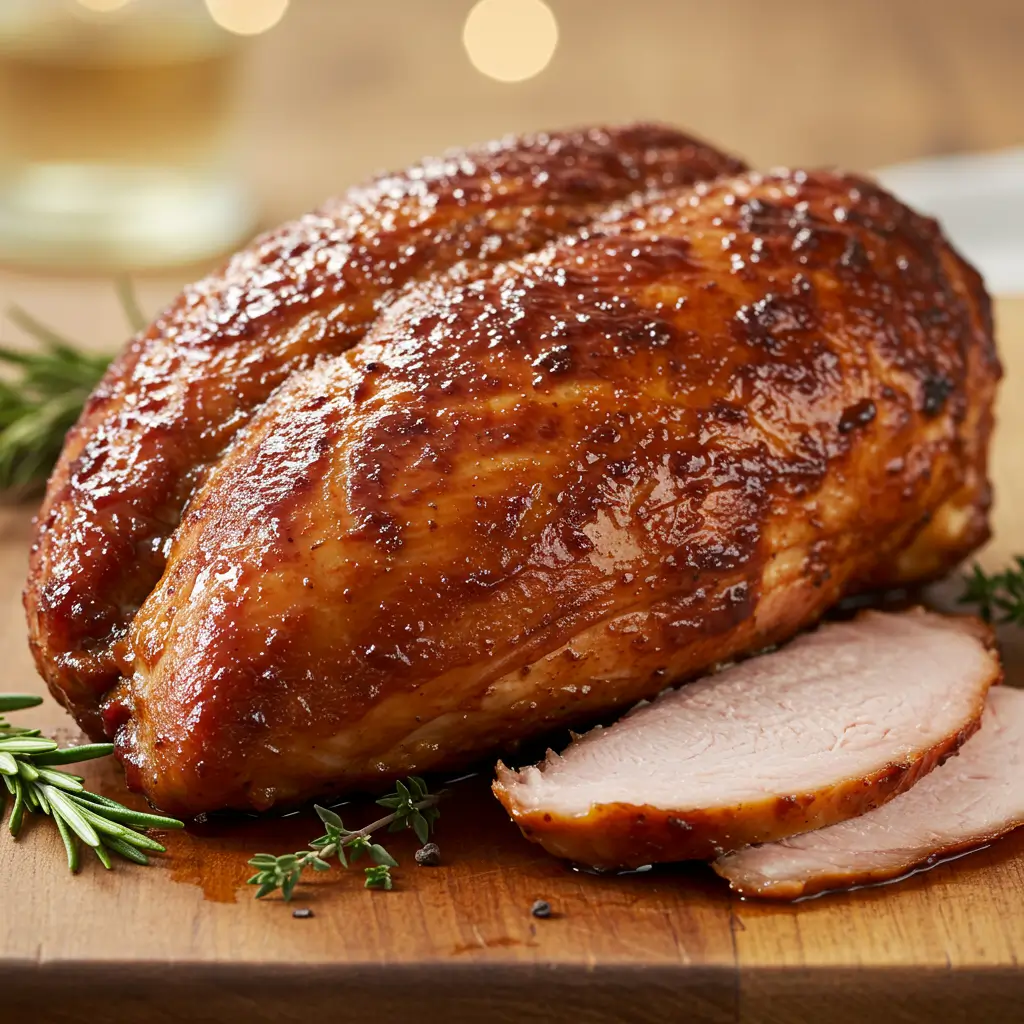
Conclusion
This smoked turkey breast recipe combines traditional barbecue techniques with modern food science to deliver consistently juicy, flavorful results. The key lies in proper temperature control, strategic seasoning, and patience during both cooking and resting phases. By following these detailed steps and avoiding common pitfalls, you’ll create restaurant-quality smoked turkey that impresses family and friends while building your confidence as a backyard pitmaster.
Ready to transform your next gathering? Try this smoked turkey breast recipe and share your results in our review section below. Don’t forget to leave a comment about your favorite wood combinations or creative serving ideas – your experience helps our community grow! Subscribe to our blog for more expert smoking techniques, seasonal recipes, and insider tips that elevate your outdoor cooking game.
FAQs
Q: Can I use a gas grill instead of a dedicated smoker? A: Absolutely! Set up your gas grill for indirect cooking at 250°F, using a smoker box or foil packet filled with wood chips. Place the turkey on the cooler side of the grill and maintain consistent temperature throughout cooking.
Q: How do I know when my turkey breast is perfectly smoked? A: The internal temperature should reach 160°F in the thickest part, the juices should run clear, and the skin should have a beautiful golden-brown color. A properly smoked turkey breast will have a distinctive pink smoke ring just under the surface.
Q: What’s the best wood for beginners? A: Apple wood provides mild, sweet smoke that’s forgiving for newcomers. It pairs excellently with poultry without overwhelming delicate flavors. Avoid strong woods like hickory or mesquite until you’re comfortable with smoke intensity.
Q: Can I brine and smoke the same day? A: While possible, overnight brining produces superior results. If time is limited, a 4-hour brine will still improve moisture retention and flavor penetration compared to no brine at all.
Q: How do I prevent the skin from becoming rubbery? A: Ensure your smoker temperature stays consistently at 250°F or higher. Lower temperatures don’t render fat effectively, resulting in chewy skin. Pat the turkey completely dry before seasoning, and avoid wrapping during cooking.
Q: What should I do if my turkey breast is cooking too quickly? A: If the internal temperature is rising faster than expected, reduce your smoker temperature slightly or move the turkey to a cooler spot on your cooking grate. You can also tent with foil to slow browning while maintaining moisture.
Did You Try Our Recipe? Leave a Review!
There are no reviews yet. Be the first one to write one.

